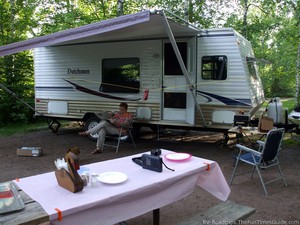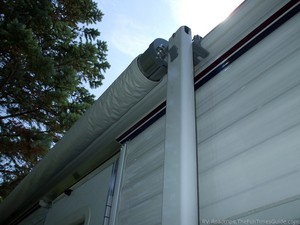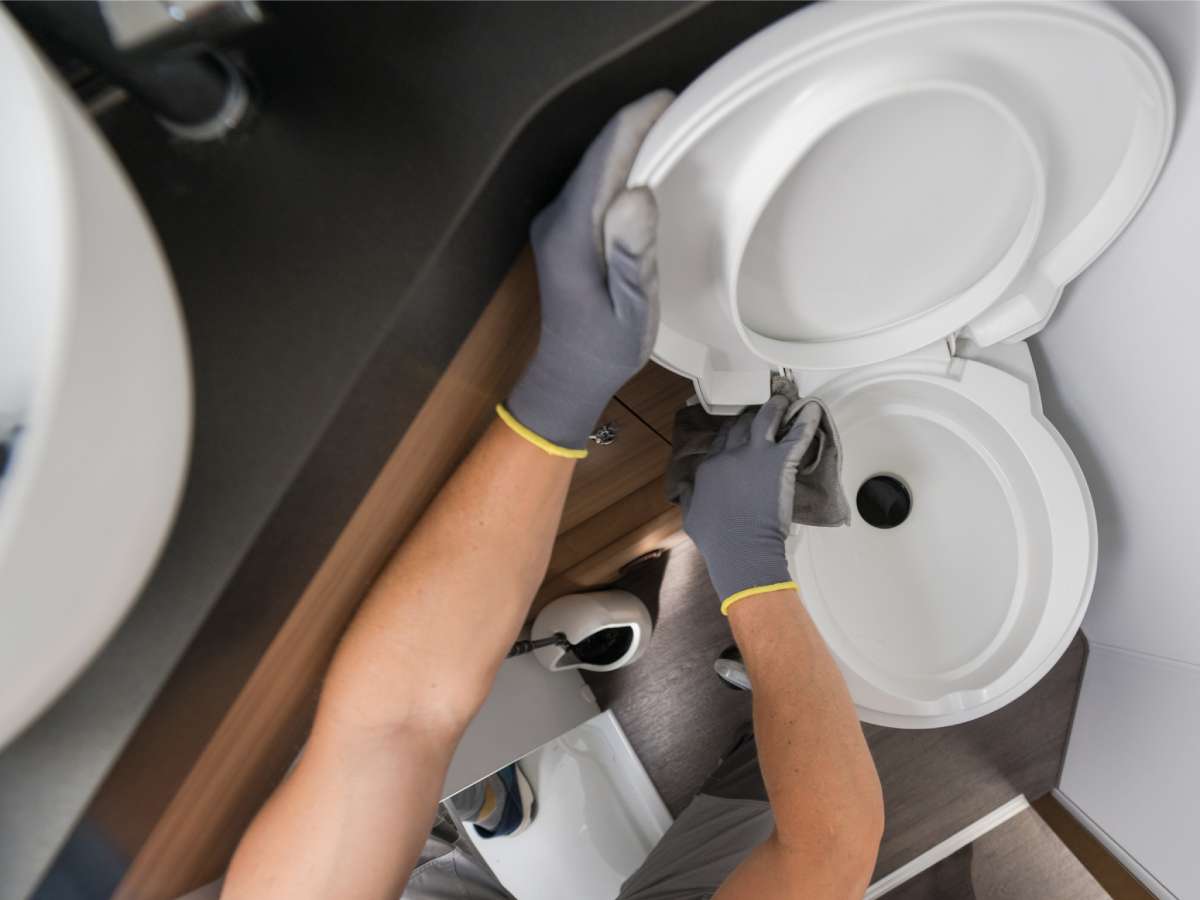 Traveling along Highway 10, east of Tucson Arizona, odds are very good that you will find the remnants of an RV awning that got destroyed by the wind laying in the ditch.
Traveling along Highway 10, east of Tucson Arizona, odds are very good that you will find the remnants of an RV awning that got destroyed by the wind laying in the ditch.
During spring and early summer, the winds coming across west Texas, New Mexico, and Arizona can be strong and surprising.
Anyone who’s crossed the desert areas out west has seen the dust devils (mini-tornados) that are a common sight. I’ve seen one of those dust devils pick up a backyard shed and toss it like a toy over a mobile home! (This video shows a pickup truck driving through a dust devil.)
Truth be told, your RV could end up in the ditch if one of those dust devils hits just right while you’re driving.
A more common occurrence would be your awning gets sucked open and rips right off the side of your motorhome or RV trailer. Framework and all, it could be gone in the blink of an eye!
RV Awning Wind Ratings
Wind and RV awnings are a bad combination. The awnings just can’t stand up to a good stiff breeze.
If left unattended when the wind comes up, the awning material will likely rip away from the track that secures it to the side of your RV.
Replacing the fabric on a 20-foot long awning will set you back a pretty penny!
Worse yet, your insurance company may balk at paying for the damage — since RV awnings are “accessories” as far as they’re concerned. Depending on your coverage, it might not be a covered item.
Insurance adjusters also know that RV awnings are rated for low wind load. If you chose to ignore that fact, they may not accept responsibility for the damage.
Following are some tips to protect your RV awning from wind damage — both while driving and while set up at your campsite.
RV Awning Gadgets & Gizmos
When extended, manually operated RV awnings can be reinforced with awning saver clamps (or RV awning de-flappers.
These will greatly reduce the whipping action of the fabric and help prevent it from tearing away from the mounting track.
They’re not an absolute guarantee that wind can’t harm your extended awning, but they will give you a bit more of a safety cushion when you forget to stow the awning and the wind comes up while you’re gone.
Another good idea is an RV awning tie down kit which secures the awning to the ground. With both items installed, your awning can tolerate quite a bit more wind before it becomes destroyed.
Tips For Stowing Your RV Awning
Stowing your RV awning for travel is just as important as securing it in place while in use.
You can avoid having your awning ripped off the side as you drive across the desert by making sure that you’ve correctly secured it before you hit the road.
When you flip the ratchet lever to rewind the awning, make sure it stays in this position for travel as well. This will put spring tension on the rolled up awning, helping to keep it tight against the mounting rail.
On the side arms you will find a knob that is used to tighten the arm when the RV awning is set up. Make sure it is also tightened down in the stowed position; this will help keep the arms from extending.
There may also be a clip on each arm that locks the RV awning’s framework together in the stowed position. Be sure that you understand the stowing procedure completely and don’t forget any of the steps.
For the patio awning, the area exposed to the wind force is significant. If there were 4 inches from the center of the roller tube to the sidewall of the coach, on a 15-foot awning, this area would be 5 square feet. Traveling at 65 mph with a quartering headwind of 25 mph gusting to 40 mph would produce a vectored effect of around 80 to 90 mph of wind energy acting upon these 5 square feet of awning. The awning may be able to tolerate this amount of energy — for a while — but if there is slack in the roll-up spring or some play in the locking mechanism, the wind will tug relentlessly at the awning. If this movement is developed to the extent where more of the canopy is exposed, the energy exerted will likewise be increased. You are now in a catch-22, and the wind is in control. Source
If you know you’re going through an area that is susceptible to high winds, the additional installation of a couple bungee straps around each of the awning legs up near the rolled up awning may help. This will ensure that the awning arms and extend supports can’t open up.
Another good device is an RV awning clamp that secures the rolled up portion of the awning to your RV. A little extra security is a good idea in areas that are prone to high winds!
With proper care, if you follow the instructions that came with your RV awning, you can expect it to last many years. Protection from direct sunlight during periods of storage will prevent the fabric from weakening due to ultraviolet rays. That first outer layer and the bead that is in the mounting rail will sun rot if left uncovered for long periods of time.
If you’re concerned that you might forget to stow the awning in time to protect it from high winds, you might want to consider upgrading when you order your next RV. You can get a power awning that extends and retracts at the flip of a switch. With a wind sensor mounted on the roof of your RV, your awnings will automatically retract before the wind speed exceeds what your awnings are rated to handle.
In that case, you want to avoid attaching things like globe patio lights to the awnings, since they would get crushed if the awnings started to automatically retract due to high winds.




